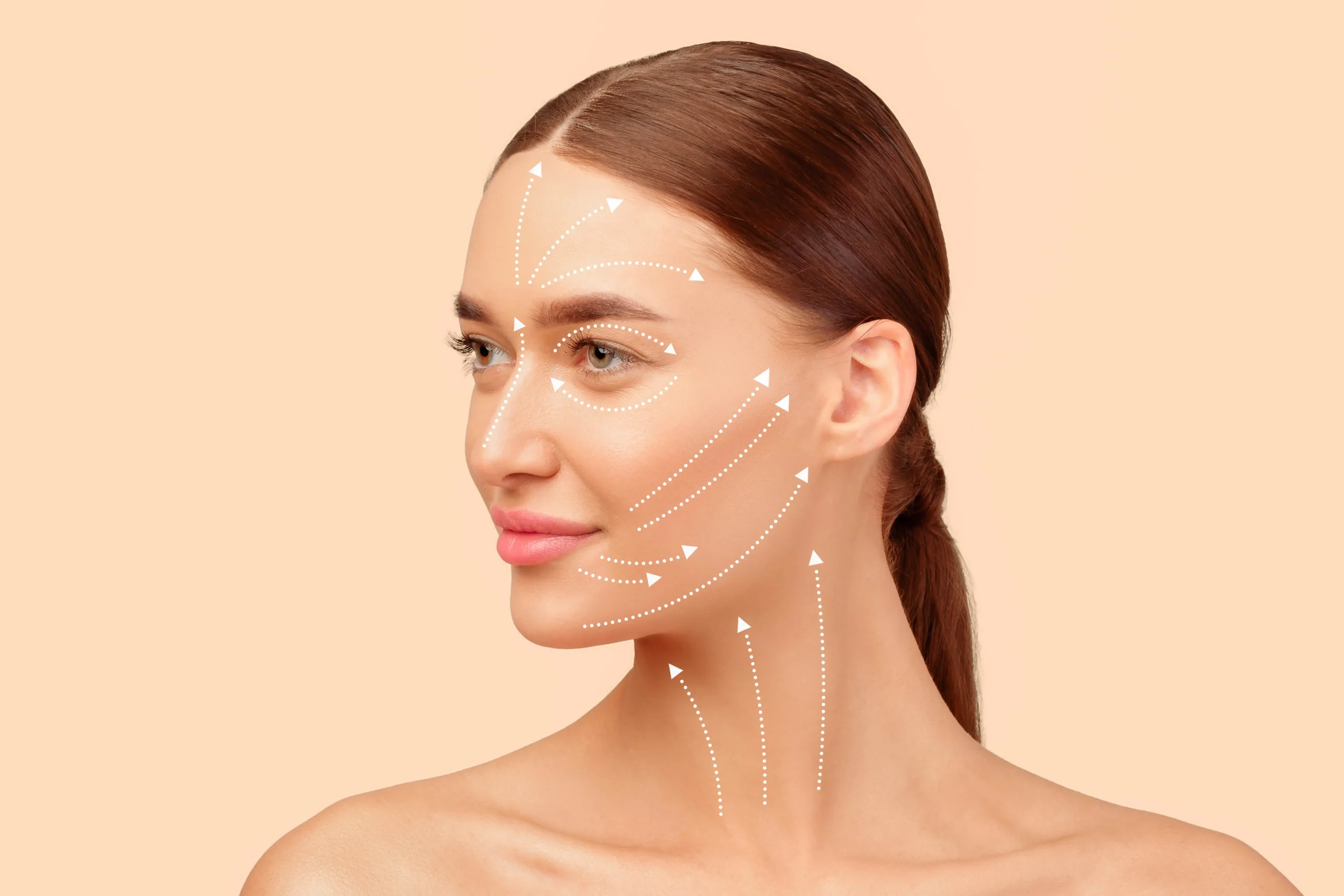
A facelift, or rhytidectomy, is a cosmetic procedure designed to reduce visible signs of facial aging. It addresses sagging skin, deep folds, jowls, and volume loss by lifting and repositioning facial tissues for a smoother, firmer, and more youthful look.
Facelifts can be performed as surgical procedures for long-lasting, transformative results or through non-surgical techniques for more subtle and gradual rejuvenation.
People often choose facelift procedures to:
You may be a good candidate if you:
Have moderate to significant facial sagging or skin laxity
Are in good physical and emotional health
Do not smoke or are willing to stop for recovery
Have realistic expectations and a desire for natural-looking results
There’s no fixed age. Many patients consider facelifts between 40 and 65, but younger individuals may opt for facelifts, while older patients may pursue more comprehensive procedures depending on their needs.
A surgical facelift involves repositioning the deeper structures of the face, tightening underlying muscles, and removing excess skin. It is the most effective solution for significant signs of aging.
SMAS Facelift: Lifts deeper facial layers (Superficial Musculoaponeurotic System) for natural, long-lasting results
Mini Facelift: Less invasive, ideal for early signs of aging
Deep Plane Facelift: Repositions deep tissues and offers very natural, long-lasting improvement
Neck Lift: Often combined to enhance jawline and address neck sagging
Dramatic and long-lasting results (typically 7–10 years)
Improves jowls, sagging skin, and deep wrinkles
Can be customized and combined with eyelid surgery or fat transfer
Restores definition to the face and neck
Non-surgical facelift treatments offer subtle rejuvenation with minimal or no downtime. Ideal for patients with mild to moderate aging who want a refreshed look without surgery.
Dermal Fillers: Restore lost volume in cheeks, lips, and under the eyes
Botulinum Toxin (Botox): Smooths dynamic wrinkles by relaxing facial muscles
Thread Lift: Uses dissolvable threads to lift sagging skin and stimulate collagen
Ultrasound (Ultherapy): Lifts and tightens skin using focused ultrasound energy
Radiofrequency (RF) Therapy: Stimulates collagen with controlled heat
Laser Resurfacing: Improves skin tone, texture, and fine lines
Microneedling: Triggers skin repair through micro-injuries, boosting firmness
Surgical Facelift: 10–14 days for daily activities; full recovery in 4–6 weeks
Non-Surgical Options: Minimal downtime; return to normal activities same or next day
Mild redness or swelling may occur
Resume normal activities the same day
Results develop gradually as collagen rebuilds
One
Local anesthesia
Immediately
7 days
None
* For informational purposes only, be sure to consult your doctor for diagnosis and treatment.
Yes. A well-performed facelift enhances your natural features and restores youthfulness without making you look artificial or “overdone.”
Surgical results typically last 7 to 10 years, while non-surgical options may last 6 to 18 months, depending on the treatment and skin condition.
Absolutely. Many patients combine facelifts with eyelid surgery, neck lifts, brow lifts, or fat transfer for full facial rejuvenation.
Yes, but incisions are made along natural skin folds—usually around the ears and hairline—and fade significantly over time with proper care.
Most people feel comfortable returning to work and public settings within 10 to 14 days after surgery. Non-surgical treatments usually require no downtime.
Not at all. Many men undergo facelift surgery to achieve a firmer jawline and refreshed appearance, while maintaining masculine features.
Skincare and facial massage can support healthy skin, but they cannot lift sagging tissues or tighten deep structures like a facelift can.
The surgery is done under anesthesia. Afterward, discomfort is mild to moderate and managed effectively with medication during the first few days.
A facelift focuses on the cheeks, jawline, and mid-face. A neck lift targets sagging under the chin and along the neck. They are often combined for best results.
If you're looking for long-lasting, dramatic results, surgery is ideal. If you want milder changes with no downtime, non-surgical treatments may be more appropriate. A consultation will help determine the best fit for your goals.

Medipol University Hospital, being the justifiably proud of Medipol Education and Health Group in Turkey and in the world, resulting in this spirit, is a health complex having JCI standards accepting patients from all over the world.
TEM Avrupa otoyolu göztepe çıkışı no:1, 34214 Bağcılar/İstanbul